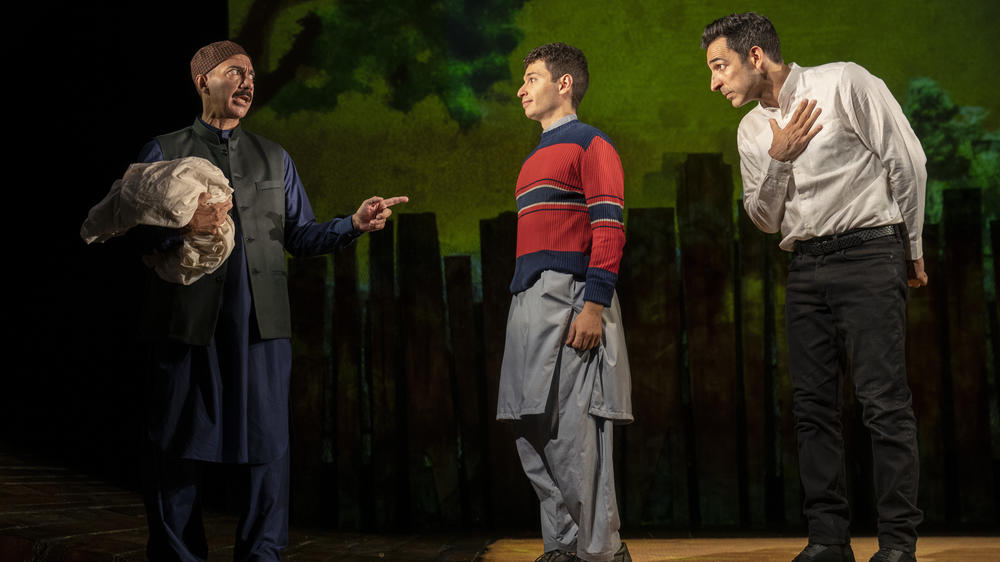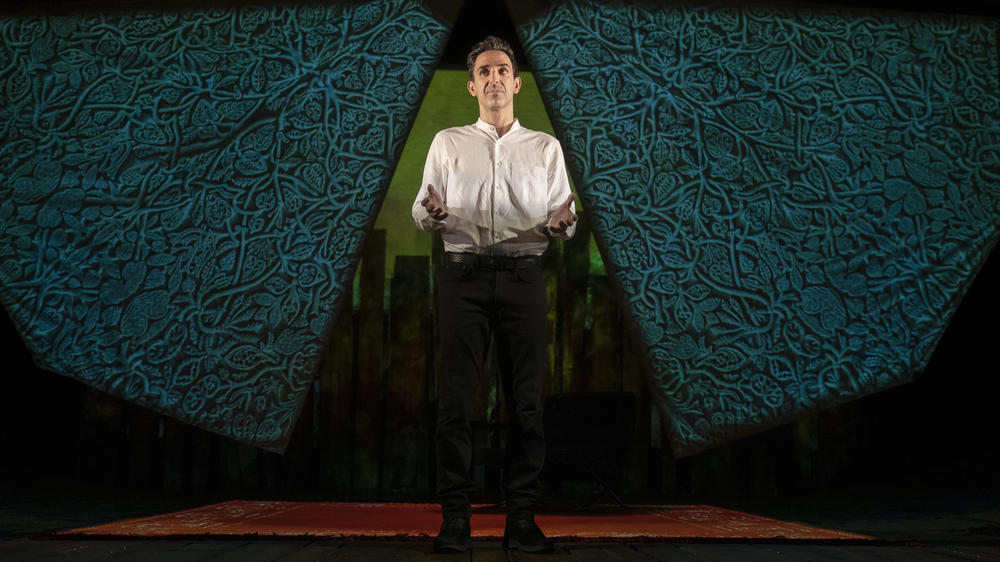Section Branding
Header Content
'The Kite Runner' brings life in Afghanistan to Broadway
Primary Content
The Kite Runner, Khaled Hosseini's 2003 best-selling novel, is a compelling portrait of life in Afghanistan and its immigrant community in the United States. Thursday night, a stage adaptation opens on Broadway for a limited run.
Hosseini was working as a doctor in California, and writing The Kite Runner, when Sept. 11 happened. So, not wanting to capitalize on a tragedy, he set the novel aside. But he says, "My wife and my family spoke to me and said, 'You know, Afghanistan is always portrayed as this place where there's mountains and terrorists and drugs. And you can really help change that image a little bit and help show a human face with this book.' "
After it was published, it became a worldwide phenomenon – it has sold more than seven million copies in the United States and has been translated into 40 languages. The Kite Runner was turned into a movie and although it's been banned by some schools for adult themes, it's part of the curriculum for many high schools.
"The best thing about this whole experience for me is that people have walked away from this book with an appreciation for the plight of Afghan people, for the plight of refugees and displaced people," says the author. Hosseini says it fosters "a sense of understanding, empathy and compassion," adding, "I hope people seeing this play will also walk away with those same feelings."
Playwright Matthew Spangler hopes so, too. He teaches performance studies and immigration studies at San Jose State University. Spangler says, "Kite Runner sits at that intersection for me between adaptation and then my own teaching and research in how refugees and asylum seekers are represented."
A couple of years after the novel was published, he contacted Hosseini about adapting it for the stage. The play got its first professional performance in 2009 and has been produced at many theaters since. The Broadway production is a restaging of a version that was done in Nottingham, England, in 2013 and subsequently in London's West End twice.
Spangler has kept the first-person narrative of the central character, Amir, who remembers growing up in Afghanistan in the 1970s before the Soviet invasion. Amir is haunted by how he didn't defend his best friend, Hassan, from sexual violence at the hands of a bully. "I think what really drives the play is that it's more than just a story," explains Spangler. "The macro objective, if you will, for the actor who's playing the main character of Amir, is to get the audience's forgiveness for this terrible thing that he did when he was a kid."
"This is the Mount Kilimanjaro of acting roles that I've ever seen in my career," says Amir Arison, the actor who plays Amir on Broadway. "I have to get my voice prepared. I have to get my body prepared. And I have to get my mind prepared. And I have to get the accent prepared. I have to get the language prepared. I have to get the history prepared. I have to get playing a 12-year-old prepared. I have to get spanning 26 years prepared."
And one of the ways Arison prepared was by working with cultural consultant Humaira Ghilzai. "My family immigrated to the U.S. after the Russian occupation," says Ghilzai. "We settled in San Jose in 1980 at the exact same time as when Khaled's family had come. And on the weekends, there were probably around 10 or 12 new immigrant families that would get together at somebody's house. So, I was best friends with Khaled's sister."
Ghilzai works with all elements of the production – writing, directing, acting, design – to ensure that it's authentic. "When I sit in that theater, I'm looking at every aspect of it with my Afghan eyes," Ghilzai explains. "What would an Afghan see when they're sitting here? You know, if the turban is wrong, the accent is wrong, and somebody's body language doesn't match that part of the world. It's going to take them away from that experience."
Ghilzai is particularly proud of a wedding sequence, where she coached the actors in the proper way to kiss the Koran. "There was one Afghan young woman who said, 'I could see myself up there on that stage, you know, in my nikah ceremony.' "
In addition to creating authenticity in the staging, director Giles Croft says the adaptation compresses a sprawling Dickensian narrative, filled with coincidence and melodrama, and makes it stage-worthy. "You can channel all that stuff into a sort of epic form of theater making," says Croft. "And the best way to make it epic theater is to make it simply and to allow the audience's imagination to do a lot of the work."
The set is simple – wooden planks, with upturned edges on either side – kind of like a skate park. There are very few props – some crates, a cart and a backdrop that looks like sails. And when Amir and Hassan fly their kite in the big kite battle of Kabul that is a centerpiece of the book – and the play – there are no kites. Just Amir describing the action, while the other actors appear on stage, looking up and swinging wind-making instruments "that are basically big rubber bands on a stick," says Croft, "and you spin them, and they make the sound of wind."
The Kite Runner's producers are hoping audiences have more than just an imaginative, empathetic experience at the theater. Portions of every ticket sold go to humanitarian organizations which help people in Afghanistan, as well as refugees. Khaled Hosseini's foundation is one of the recipients. "I'm grateful to the production for doing that and it's the right thing to do," says Hosseini. "And I'm glad they've gone in that direction. I thank them for it."
The Kite Runner plays at the Helen Hayes Theatre on Broadway through October 30.
Copyright 2022 NPR. To see more, visit https://www.npr.org.



